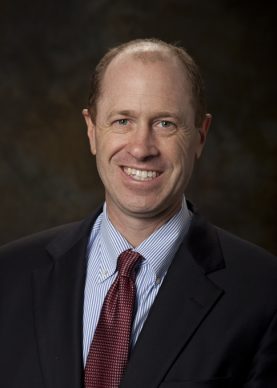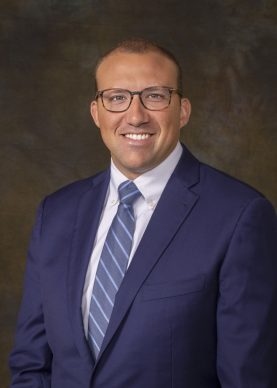Diagnosis and Treatment of Scoliosis in Wake County

What is Scoliosis?
The human spine should be straight, with gentle anterior and posterior lumbar, thoracic, and cervical curves. Individuals with scoliosis have curved spines, which can cause development problems, health complications, and pain. Scoliosis often reveals itself in childhood or the teenage years, with the average age of diagnosis being 10-15 years old. Children with mild scoliosis should have immediate treatment because their spines are malleable. As the child grows, the curvature worsens and limits space within the body. Scoliosis can improve with intervention, depending on its severity.

What Causes Scoliosis?
Most cases of scoliosis are hereditary and run in families. Early detection can help reduce scoliosis symptoms, but even individuals who receive the diagnosis later in life should seek treatment. Potential defects from birth also play a role in scoliosis. Abnormalities of the vertebrae and spinal column can control the speed at which the curvature forms and the severity of the condition.
Scoliosis Risk Factors
Individuals with scoliosis in their family history run a higher risk of developing the ailment. Other risk factors include age and sex. Individuals at or below puberty age have a higher risk of developing scoliosis, and females have a significantly increased risk compared to men. However, anyone of any age and sex can receive a scoliosis diagnosis.
Despite suffering from back pain, adults with scoliosis may not realize they have the condition. Furthermore, scoliosis in adults may not cause as many symptoms as childhood scoliosis, depending on underlying health conditions or circumstances.
Symptoms of Scoliosis
Scoliosis causes a variety of symptoms that vary in severity. Some individuals with scoliosis experience little to no pain (especially adults), but others may have debilitating symptoms. Additionally, some signs may be visible while others aren’t as apparent. Below are some of the most common symptoms of scoliosis, both visible and invisible.
Visible Symptoms
- Uneven shoulders with a protruding shoulder blade
- Rib cage with differentiating heights
- Uneven waistline
- The body leaning towards one side
Invisible Symptoms
- Low back pain
- Stiffness
- Leg numbness or tingling
- Exhaustion
Severe scoliosis is relatively easy to spot – but those with mild cases should still seek treatment to avoid future complications.
How is Scoliosis Diagnosed?
X-rays and physical examinations are common ways to diagnose scoliosis. Tests for this condition gauge the severity by the degree of the spinal curve. Pediatricians use Adam’s Forward Bend Test to look for scoliosis in children. The child bends 90 degrees by the waist, allowing the examiner to spot abnormalities in the spine.

Treatment for Scoliosis in Wake County
90% of scoliosis cases don’t require much treatment, especially in a growing body. In the case of idiopathic scoliosis, the cause is unknown, and doctors suggest monitoring the condition as the child grows. If the individual is a child, they will likely see a physician every 4 to 6 months throughout adolescence, and adults will need x-rays every five years.
Physicians usually only use braces in adolescent scoliosis cases. The bracing process works for children undergoing skeletal maturity who have a spinal curve between 25 and 40 degrees. The brace’s primary function is to prevent the curve from progressing into a worsened state. The adjustments and fit depend on the predicted growth of the child. The child wears the brace for 16 to 24 hours per day until growth stops.
Spinal curves higher than 40 degrees will have surgery as an immediate treatment option (for both adults and children). In most cases, the surgery involves the fusion of vertebral segments of the spine and transferring most of the load and stress on the remaining mobile vertebrae. The procedures can be performed from the front (anterior) or back (posterior) of the body, depending on the spinal condition.

Scoliosis Recovery Time
The recovery time after scoliosis surgery varies between age groups. Individuals with idiopathic scoliosis generally require no bracing post-surgery. Surgery patients can resume pre-surgical activities after a 6-month resting period. Individuals recovering from scoliosis surgery usually return to work or school 2 to 4 weeks following surgery.
How Can I Prevent Scoliosis?
Scoliosis is hard to prevent because it involves several unavoidable factors – age, sex, and genetics. Routine exercise can play a part in building muscles around the spine and preventing the curvature from increasing, but may not stop the development of scoliosis entirely. Staying on a strict diet can also lower the risk of scoliosis. Foods and vitamins that promote bone health can help keep your spine strong and healthy.

Expert Neck and Back Care at Raleigh Orthopaedic
If you are seeking a scoliosis diagnosis and treatment plan, consider contacting Raleigh Orthopaedic to schedule an appointment with one of our orthopedic specialists. Our team consists of trained neurosurgeons and physicians who can gauge the severity of spinal curvature. We’ll connect you with the right doctor and examine all the possible treatments and progressional steps to a healthy back. We have several convenient locations around the Wake County area, so contact us today or book an appointment online for help with your scoliosis.

